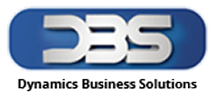Surprising fact: more than 70% of UAE wage file rejections stem from simple format or data mismatches, not salary errors.
This guide helps U.S.-based decision-makers running operations in the UAE get WPS right using DynaPay Human Resources & Payroll tightly integrated with Microsoft platforms. You’ll learn how a unified business central platform links employee records, time capture, and bank file outputs to reduce rework and risk.
Integrated systems deliver automatic regulatory updates, centralized data access, and encrypted storage so salary runs meet approved formats on time. That means fewer penalties, faster cycle times, and better trust with staff.
We’ll show how DynaPay on Dynamics 365 Business Central creates an auditable trail from timesheets to payment files, and how native connectivity with financial ledgers speeds reconciliation across entities.
Key Takeaways
- WPS compliance hinges on correct file format and timely bank submissions.
- DynaPay plus business central centralizes workforce and pay data for accuracy.
- Cloud-enabled updates keep rules current and lower manual overhead.
- Standardized integrations cut entry errors and shorten payroll cycles.
- Native links to finance modules simplify reconciliation and reporting.
Understand UAE WPS and how DynaPay on Dynamics 365 Business Central supports it
WPS compliance depends on precise data, punctual bank transfers, and auditable records. The Wages Protection System requires employers to send correctly formatted salary files through approved banking channels on each pay cycle.
What Wages Protection System requires: bank files, timelines, and penalties
Core obligations include validated employee identifiers, exact contract amounts, and on-time submissions. Lateness or mismatches can trigger fines and administrative restrictions.
Why integrating payroll and HR inside Microsoft Dynamics 365 Business Central reduces compliance risk
DynaPay centralizes contracts, benefits, and working-time data so runs pull from a single validated dataset. That cuts manual entry and common mismatches that cause file rejections.
- Deliverables: formatted salary files, reconciled ledger postings, and audit-ready reports.
- Real-time readiness: hours and overtime flow into pay calculations to reduce arithmetic errors.
- Compliance checks: built-in validations screen fields, amounts, and timelines before file generation.
- Employee experience: employee self-service gives payslip visibility so issues are caught early.
Automatic regulatory and tax updates keep parameters current, and the cloud payroll integration with business central creates a single source of truth for reporting and finance reconciliation.
Set up the right architecture: DynaPay HR & Payroll integrated with Business Central
A clear reference architecture aligns finance, employee services, and payroll processing under one platform. Start by mapping three core components so teams know ownership and flow.
Core components: Business Central handles financials and ledger posting. DynaPay acts as the payroll engine that transforms HR records into payroll-ready outputs. An employee self-service portal exposes payslips, leave requests, and personal data edits with role-based access.
Secure foundation: A managed cloud setup provides automatic regulatory updates, scheduled backups, and scalable resources. This keeps parameters current and reduces manual patching while protecting sensitive employee data with encryption and GDPR/DPA controls.
Interfaces & data flows: Microsoft Dataverse and out-of-the-box connectors stream master data and time records to the payroll engine. Data arrives in API, XML, CSV, or TXT formats, is validated and transformed, then returns journals and bank files for posting and audit trails.
| Component | Primary Role | Formats Supported | Operational Benefit |
| Business Central | Financials & ledgers | API, XML | Native posting and reconciliation |
| DynaPay engine | Calculate, validate, and generate files | CSV, TXT, XML, API | Reduced rework; delta detection for hires/terms |
| Employee portal | Self-service and document access | PDF, secure web | Faster issue resolution; fewer helpdesk tickets |
| Connectors / Dataverse | Secure data streaming | API, CSV | Minimal custom integration; GDPR-compliant handling |
For multi-entity setups, configure country-specific parameters so UAE WPS settings run alongside other geographies. Building on Microsoft Dynamics yields a familiar UI, AL extensibility, and quicker time to value. End-to-end flows reduce manual reconciliation by returning payroll journals, liabilities, and cash entries with clear narratives into Business Central.
How to configure WPS-compliant payroll processing in DynaPay
Begin configuration with clean workforce data to prevent common file mismatches and bank rejections. Accurate employee identities, contracts, and earning and tax codes must be captured per legal entity before any runs.
Define workforce data and tax settings
Set up master records for personal ID, contact details, grades, allowances, and benefits. Use standard earning and tax codes so calculations match UAE rules.
Set up time capture and rostering
Integrate time & attendance, timesheets, and rostering so hours, overtime, and shift differentials flow automatically. This reduces duplicate entry and ensures statutory overtime is applied.
Build pay cycles, automate calculations, and close periods
Map pay calendars, cutoffs, and approval workflows. Enable automatic period close and validation rules to lock figures before file creation.
Generate SIF/WPS bank files and reconcile
Export SIF/WPS bank files in .txt, .csv, or .xml and validate mandatory fields to cut rejections. Post journals and liabilities back into business central for reconciliation and audit trails.
Enable employee self-service
Give staff secure access to payslips, leave requests, and personal updates. This catches data issues early and reduces manual corrections.
| Task | Key Action | Benefit |
| Master data | Configure IDs, contracts, tax codes | Accurate calculations; fewer bank rejections |
| Time capture | Integrate attendance and rostering | Correct hours and overtime |
| Pay cycle | Define calendars and auto-close | Consistent WPS submission timing |
| Bank files & reconciliation | Generate SIF/WPS; post to finance | Audit-ready ledgers in business central |
For step-by-step integration guidance, review our HR–payroll integration with Business Central documentation.
Payroll Software, HR Software, Cloud Payroll Software, Dynamics 365 BC: mapping features to WPS outcomes
Translate platform features into compliance wins. Automatic regulatory updates and configurable formula builders make tax and labor rule changes actionable so pay runs meet UAE WPS formats.
Automatic updates push new tax rates and statutory parameters into the calculation engine. This reduces last-minute fixes and keeps submissions consistent with local rules in dynamics 365 business and business central environments.
Extensibility matters. AL-based extensions and standard APIs enable secure connections to banks, attendance tools, and third-party systems. Exports in .txt, .csv, and .xml ensure wide bank compatibility and fewer file rejections.
Reporting closes the loop. Power BI dashboards and summary reports provide exception tracking and audit trails so finance teams can validate WPS readiness before cutoffs. Linking employee self-service and time attendance inputs improves data quality and lowers support demand.
- Auto updates -> fewer format errors and penalties.
- Formula builders -> company rules with statutory guardrails.
- APIs & exports -> seamless bank submissions.
- Dashboards -> faster sign-off and audit readiness.
Learn practical integration tips in 7 ways DynaPay streamlines WPS accuracy.
Governance, data protection, and scalability for multi-entity operations
Clear governance and secure interfaces ensure legal entities run local pay cycles without cross-contamination of rules.
Country-by-country configuration
Configure each legal entity with its own chart of accounts, tax parameters, and UAE-specific WPS banking settings.
Interfaces capture monthly delta changes, auto-close periods, and initiate the next run to keep cycles predictable and aligned to deadlines.
Data privacy and security
Apply GDPR/DPA controls, encrypted transmission, and role-based access to protect sensitive employee information.
Use secure streaming to move records between business central and the payroll engine while preserving audit trails.
From pilot to rollout
Start with a UAE pilot: validate SIF file generation, bank testing, and reconciliation.
Then scale using standardized templates, formal change management, and team training for finance, payroll, and operations.
| Area | Control | Outcome |
| Governance | Entity-specific rules and roles | Reduced compliance risk; clear ownership |
| Security | Encrypted streams & RBAC | Protected employee data; audit-ready logs |
| Operations | Auto-close, delta capture | Predictable cycles; fewer errors |
| Rollout | Pilot → scale templates | Faster adoption; repeatable implementation |
For guidance on how to simplify workflows and integrate systems, see simplify HR and payroll operations with Dynamics 365 Business Central and DynaPay.
Conclusion
Close your WPS implementation with a clear, repeatable path that ties master data, attendance, and bank output into one auditable flow.
DynaPay Human Resources & Payroll on Dynamics 365 Business Central centralizes employee records, time capture, and SIF generation so UAE WPS runs are consistent and traceable.
Follow the simple how-to: validate master data, integrate time feeds, configure pay cycles and calculations, export SIF files, and reconcile journals in business central. Built-in validations and automatic updates cut format errors and fines.
Start with a pilot, align stakeholders, and engage experienced support to speed implementation and adoption across entities. The result is lower risk, faster closes, and scalable multi-entity operations with secure, auditable data flows.
Dynamics Business Solutions (DBS) is certified Microsoft Dynamics partner in UAE, we take pride in our ability to develop and deploy the right business solution that matches global client’s requirements. DBS has developed in-house state of the art solutions for HR and Payroll, Dynamo and DynaPay on top of Microsoft Dynamics 365 FO and Business Central respectively. These solutions are catering the all business needs of HR and Payroll departments. We provide best services and support to our clients.
To know more, speak to our expert at Dubai: +971 4 447 5525 Jeddah: +966 508162072 or inbox us your query at info@dynamics.ae OR visit www.dynamics.ae
FAQ
What is the Wages Protection System (WPS) and who must comply?
WPS is the UAE payroll clearing mechanism that ensures timely, accurate salary payments through approved banks. All UAE-based employers with salary obligations must comply, including free zone and mainland entities. Compliance requires submitting bank files in specified formats, meeting payment timelines, and keeping accurate payroll records to avoid penalties.
How does DynaPay integrated with Microsoft Dynamics 365 Business Central help meet WPS requirements?
DynaPay connects workforce records, earnings, deductions, and bank details stored in Business Central to generate WPS-compatible files. The integration automates bank file creation, maps employer and employee IDs to UAE bank formats, and reconciles payments with general ledger postings to reduce manual errors and audit exposure.
What file formats and timelines does WPS require for salary submissions?
WPS typically accepts structured text or CSV files that include employee identifiers, bank account numbers, and net pay amounts. Employers must submit files and ensure funds are available by the payroll date specified by their bank and regulator. DynaPay supports common export formats and can schedule file generation to meet those deadlines.
Which core components are needed to run a compliant payroll solution with Business Central?
A compliant setup needs Business Central for financials and employee master data, DynaPay for payroll calculations and statutory rules, and an employee self-service portal for payslips and personal updates. Together they provide accurate pay runs, ledger integration, and employee access to documents and leave information.
How is employee data secured when using a cloud-based payroll and HR stack?
Secure deployments use encryption at rest and in transit, role-based access control, regular backups, and audit logging. Data flows through Microsoft Dataverse or secure connectors, and solutions adhere to relevant data protection standards and contractual data processing terms to protect personal and payroll information.
Can time and attendance data be integrated to ensure accurate WPS calculations?
Yes. DynaPay supports integration with time and attendance systems via APIs or out-of-the-box connectors. Timesheets, rostering, and clock-in records feed wage calculations, overtime and allowances are computed automatically, and exceptions are flagged before payroll is posted and bank files are produced.
How are company-specific rules and statutory updates handled?
The solution includes configurable formula builders and rule engines that let administrators model company policies and local regulations. Vendors push statutory updates and patches for tax or regulatory changes. Administrators validate rules in a test environment before applying them to live payroll runs.
How does reconciliation work between payroll runs and Business Central financials?
Payroll postings are generated as ledger entries in Business Central, linking gross-to-net calculations, taxes, and employer liabilities to GL accounts. Bank payment files produced for WPS are reconciled against bank statements, and variance reports help identify mismatches for corrective action.
Which export formats are supported for banks and auditors?
Common export formats include .txt, .csv, and XML variants required by UAE banks and regulators. The system can produce audit-ready reports and a detailed pay register for auditors, and it supports API-driven transfers where banks allow direct connectors.
How do multi-entity and multi-country operations maintain compliance across legal entities?
The architecture supports country-by-country configurations for legal entities, currency handling, tax rules, and local banking requirements. Each entity can maintain its own chart of accounts, statutory settings, and pay calendars while sharing a centralized platform for governance and reporting.
What are best practices for going from pilot to full rollout?
Start with a controlled pilot covering one entity, close collaboration between payroll, finance, and IT, thorough data cleansing, and end-to-end testing of pay runs and bank file generation. Provide training for administrators and employees, document processes, and schedule staged rollouts with post-go-live support.
How does employee self-service improve payroll processes and WPS compliance?
Employee self-service enables workers to access payslips, update personal and bank details, and submit leave requests. This reduces HR data entry errors, speeds change capture, and ensures bank details are current for WPS submissions, improving on-time and accurate payments.
What reporting and analytics options are available for payroll audit trails?
The platform integrates with Power BI and Business Central reporting tools to deliver payroll summaries, statutory reports, audit trails, and reconciliation dashboards. These tools provide visibility into trends, exceptions, and compliance metrics for internal and external audits.
How are backups, disaster recovery, and uptime addressed in a cloud deployment?
Cloud providers offer automated backups, geo-redundant storage, and defined recovery time objectives. The payroll solution should include tested recovery procedures, regular backup verification, and SLAs for availability to meet operational continuity and regulatory expectations.
What support and change management services help sustain ongoing compliance?
Ongoing support includes statutory update subscriptions, helpdesk services, periodic audits, and change management assistance. Vendors often provide implementation consultants, training resources, and managed services to keep configurations current and processes efficient.




